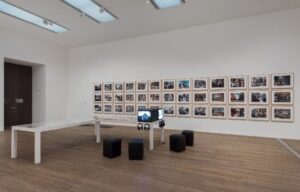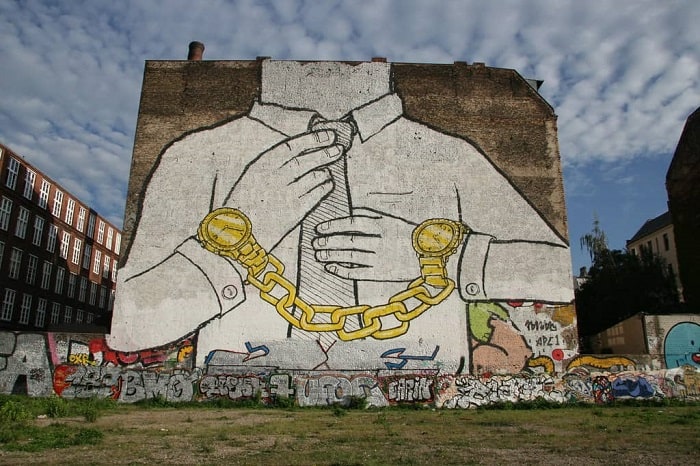Art UK -Learning resources about street art-
Art UK provides a resource for classes to collaborate and celebrate their city with ideas for street art. This activity includes suggestions for street art format where students can create a piece of work on paper or board and stick it to a wall. The idea of working in groups to observe aspects of the town to be celebrated suggests the possibility of encouraging connections between local industries, culture and specific places and the curriculum with the history and geography themes they have recently studied (Art UK, n.d.). In addition, Art UK operates an online collection of predominantly British public art at the same time as proposing the programme. However, the digital connections that can expand this access and reach new audiences are not the same as the digital divide between online and non-online audiences (ATLAS Arts, 2022). However, I think that the learning programmes to the community that they offer, which I have mentioned, offer children of an age who do not have easy access to online material and students who are just starting to be exposed to it, diminish this digital boundary. By crossing both online collections and practical arts opportunities, they can contribute not only to the creation of an arts archive in a wider context, but also to more local networks.

Figure 1: Screenshot of learning resources page from Art UK, taken by author
The Google Street Art Project
The Google Street Art Project published a street art database in 2014 with approximately 260 virtual exhibitions in 34 countries (Riefe, 2015). It is not only about the artwork, but also about the history, some feature articles and a guided tour in collaboration with TED Talk. Preserving a collection of street art online is a benefit to fans of the medium, but it also has advantages for artists, as their work can be made available to the world at large. I recognise the greatest benefit of this preservation as being the ability to archive works that are in a temporary and difficult-to-preserve condition. For example, the project can virtually preserve objects that have been painted over or are not currently open to the public, such as the 5pointz space in New York, which was whitewashed before it was demolished. 5pointz in New York is a building owned by GM Realty in Queens, New York, where the owners had permission to create artworks on the exterior and interior walls of the building (Kramer, 2022). However, the building was demolished and replaced by a building, which led to a court case with artists seeking an injunction, but before the case could be concluded, the owner whitewashed and destroyed all the works (O’Connell, 2018). It is precisely because of this dependence of street art on the condition of the building for the existence of the work that catalogue archives online has the advantage of keeping the work alive not only for the audience, but also for the artists.

Figure 5 5Pointz before the whitewashing. (2013). Ezmosis [Photograph]. Wikimedia Commons. Available at https://commons.wikimedia.org/wiki/File:View_of_5_Pointz,_January_20,_2013.jpg




